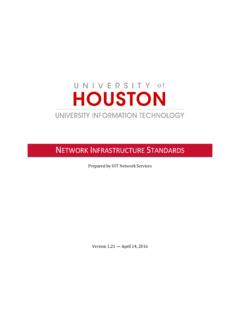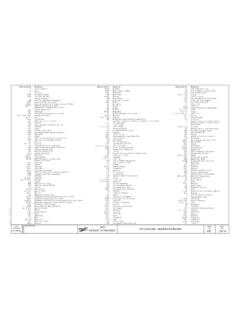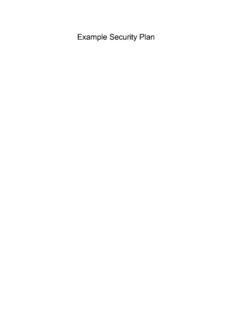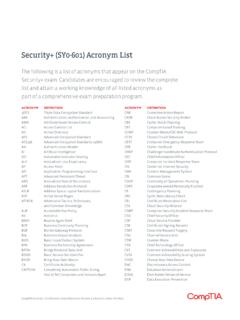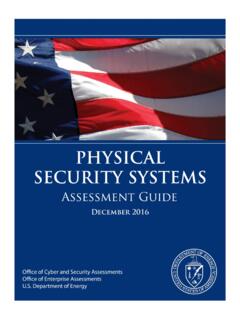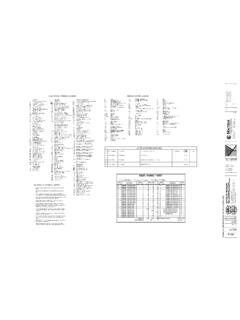Transcription of RightShip Inspection Ship Questionnaire (RISQ)
1 1 | Inspection ship Questionnaire ( risq )February 2021 RightShip Inspection ship Questionnaire ( risq )2 | Inspection ship Questionnaire ( risq )Contents Revision History Table 4 Glossary of Terms 5 Abbreviations 7 Objective of the RightShip Dry Inspection 9 RightShip Inspection ship Questionnaire 9 How to Answer the RightShip ship Inspection Questionnaire 9 Inspection Procedure 10 Scope and Guide to Timing of Inspection 11 Completion of the List of Non-Conformities and Inspection Report 11 Vessel s Manager 11 Section 1: General Information 12 Section 2: Certification and Personnel Management 15 Section 3: Navigation 203 | Inspection ship Questionnaire ( risq )Section 4: ISM System 31 Section 5: Pollution Prevention and Control 48 Section 6: ship s Structure 55 Section 7A: Fuel Management (Oil Fuel) 57 Section 7B: Fuel Management (LNG Fuels) 60 Section 8A: Cargo Operation- Solid Bulk Cargo other than Grain 69 Section 8B: Cargo Operation- Bulk Grain 77 Section 8C: Cargo Operation- General Cargo 90 Section 8D: Cargo Operation- Cellular Container Ships 104 Section 8E: Cargo Operation- Self-Unloading Transhipment 113 Section 9A: Hatch Cover and Lifting Appliances 119 Section 9B: Gantry Cranes 125 Section 10: Mooring Operations 130 Section 11: Radio and Communication 137 Section 12: Security 140 Section 13: Machinery Space 143 Section 14: General Appearance - Hull and Superstructure 153 Section 15: Health and Welfare of Seafarers 157 Section 16: Ice or Polar Water Operations 160 Bibliography 1674 | Inspection ship Questionnaire ( risq )Revision history tableVersion NumberSectionQuestionRevision DescriptionRevision Date5 | Inspection ship Questionnaire ( risq )Glossary Of TermsBest Practices.
2 Are approaches, procedures or tools that ship managers use to operate their vessels more safely, greener, smarter and above minimum Stowage: Broken stowage is lost cargo space in the holds of a vessel due to the contour of the hull and / or the shape of the cargo. Dunnage, ladders, and stanchions are example of broken stowage. Broken stowage is shown as a percentage figure, which is an estimation of the space that will be : Bulk carriers with deadweight of above 90,000 Unit: Cargo unit means a vehicle, container, flat, pallet, portable tank, packaged unit, or any other entity, etc., and loading equipment, or any part thereof, which belongs to the ship but is not fixed to the ship (Assembly resolution (XII)).Company: The company means the owner of the ship , or any other organisation such as a ship manager or bareboat charterer who has assumed the responsibility for operation of the ship from the owner of the ship , including the duties and responsibilities imposed by the International Safety management (ISM) Code.
3 This company would normally be the name recorded on the ship s Document of Compliance. May also referred to as vessel s manager (SOLAS) Chapter IX/1, 2014 Competent Authority: A minister, government department or other authority empowered to issue regulations, orders or other instructions having the force of Person: A person possessing the knowledge and experience required for the performance of thorough examinations and tests of lifting appliances and loose gear and who is acceptable to the competent : Materials of various types, often timber or matting, placed among the cargo for separation, to increase the friction between the base of the cargo unit and the deck. This spreads the load of cargo unit across the deck, and hence provides ventilation; protection from damage and, with certain cargoes, provides space in which the fork lift s tynes truck may be Rated Equipment: Equipment that has been classified as safe for use in hazardous Administration: The maritime administration of a vessel s country of State: The Government of the nation whose flag a vessel is entitled to : A person designated by a fumigation company, government agency or appropriate Self-Unloading Vessel: A bulk carrier equipped with a self-Unloading system that includes hoppered hold, gravity gate, belt conveyor, elevating system and discharge boom.
4 This type of vessel delivers free-flowing dry bulk commodities. This system has the ability to discharge on shore or to an offshore : Bulk carriers with a deadweight of up to 60,000 : There is no standard definition of a heavy lift in weight terms, although the cargo insurance policy may set a weight figure as part of the critical item criteria. However, for the purpose of this Inspection assessment and Questionnaire the term heavy lift means a cargo that weighs more than 50 tonnes. High Modulus Synthetic Fibre: Manmade, continuous filament synthetic fibre with modulus in the range of 50-150 | Inspection ship Questionnaire ( risq )Hybrid Self-Unloading Vessel: A bulk carrier equipped with both deck cranes and belt conveyor on-board. The hybrid self-unloading system includes conventional cargo hold, deck crane, hopper, belt conveyor and discharge boom. This system has the ability to discharge on-shore or to an off-shore Recommendations: RightShip supports and endorses particular methods of working or Design Break Force (LDBF): Is the minimum force that a new, dry, spliced mooring line will break at when tested according to appendix B of Mooring Equipment Guidelines (MEG4).
5 This is for all mooring line and tail materials, except those manufactured from nylon which are tested wet and spliced. This value is declared by the manufacturer on each line s mooring line certificate and is stated on a manufacturer s line data sheet. Loose Gear: An item of equipment that can be used to attach a load to a lifting appliance but does not form an integral part of the appliance or load. This includes a block, shackle, hook, swivel, connecting plate, ring, chain block or hoist, chain or overhauling Health: According to the World Health Organization, mental health is a state of well-being in which every individual realises his or her own potential, can cope with the normal stresses of life, can work productively and fruitfully, and is able to make a contribution to her or his community. Mental Disorders: Mental disorders comprise a broad range of problems, with different symptoms. However, they are generally characterized by some combination of abnormal thoughts, emotions, behaviour and relationships with others.
6 Examples are schizophrenia, depression, intellectual disabilities and disorders due to drug abuse. Most of these disorders can be successfully of Gauge: The term out-of-gauge refers to any cargo that has dimensions that exceed the normal dimensions of a standard shipping : Bulk carriers of between 60,000 to 90,000 deadweight Maintenance System (PMS): The parts(s) of the company s Safety Management System (SMS) that address Inspection , maintenance and repair of the ship : A ship which has one or more decks (either closed or open), not normally subdivided in any way and generally running the entire length of the ship in which goods (packaged or in bulk; in / on road vehicles including road tank vehicles trailers, containers, pallets, demountable or portable tanks; or in / on similar cargo transport units or other receptacles) can be loaded or unloaded normally in a horizontal Management System (SMS): The Company s documented quality management system provided on board the vessel and in the office which addresses the requirements of the IMO ISM Design Minimum Breaking Load ( ship design MBL): Is the stated value around which a ship s mooring system is designed and established at the ship design Requirements: Statutory requirements are those that are required by law.
7 These requirements are non-negotiable and must be complied following are agreed definitions for terms used within this minimum breaking load of new, dry mooring lines for which a ship s mooring system is designed, to meet IACS standard environmental criteria restraint requirements. The ship design MBL is the core parameter against which all the other components of a ship s mooring system are sized and designed with defined Temperature: Colder than the temperature at which water freezes ( colder than 32 F or 0 C)Working Load Limit: The maximum load that a mooring line should be subjected to in operational service, calculated from the standard environmental criteria. The WLL is expressed as a percentage of ship design MBL and should be used as a limiting value in both ship design and operational mooring analyses. During operation, the WLL should not be the same way that SWL is a limit for fixed equipment, the WLL value is used as a limit with the standard environmental criteria and mooring layout when establishing mooring system designs.
8 Steel wire ropes have a WLL of 55% of the ship design MBL and all other cordage (synthetic) have a WLL of 50% of the ship design | Inspection ship Questionnaire ( risq )AbbreviationsABS: American Bureau of ShippingAIS: Automatic Identification SystemAMSA: Australian Maritime Safety Authority BAC: Blood Alcohol ConcentrationBFO: Bunkering Facility Organisation BLU Code: The Code of Practice for the Safe Loading and Unloading of Bulk CarriersBNWAS: Bridge Navigational Watch Alarm SystemBWM: Ballast Water ManagementBYOD: Bring Your Own DeviceCAP: Condition Assessment ProgramCATZOC: Category Zone of ConfidenceCBA: Collective Bargaining Agreements CBO: Condition Based OverhaulCBT: Computer Based TrainingCCTV: closed - circuit TelevisionCMS: Continuous Machinery SurveyCoP: Certificate of ProficiencyCPA: Closest Point of Approach CPP: Controllable Pitch PropellerCRA: Certificate of Receipt of Application CSM: Cargo Securing ManualCSO: Company s Security OfficerCSS Code: Cargo Stowage and Securing CodeCTF: Coating Technical File DBMS:Dry Bulk Management SystemDG:Dangerous Good DGNSS: Differential Global Navigation Satellite SystemDRI: Direct Reduced Iron DSC: Digital Selective CallingDUKC: Dynamic Under Keel ClearanceECA: Emission Control Area ECDIS: Electronic Chart Display and Information SystemEEBD: Emergency Escape Breathing DevicesEGTS: Exhaust Gas Treatment System ENC:Electronic Navigational ChartsEPIRB: Emergency Position Indicating Radio Beacon ESD: Emergency shutdown ERS: Emergency Release SystemERC: Emergency Release CouplingETB: Emergency Towing BookletFML: Flow Moisture LimitFOSFA:Federation of Oils, Seeds and Fat AssociationsGAFTA:Grain and Feed Trade AssociationGMDSS: Global Maritime Distress and Safety SystemGNSS: Global Navigation Satellite SystemGPS: Global Positioning SystemGRB: Garbage Record BookHAZOP: Hazard and Operability Analysis HDOP: Horizontal Dilution of Precision HIMP.
9 Hull Inspection and Maintenance ProgramHLS: Helicopter Landing SiteHME:Harmful to the Marine EnvironmentHMSF: High Modulus Synthetic FibreIACS: International Association of Classification SocietiesIAMSAR: International Aeronautical and Maritime Search and RescueIAPH: International Association of Ports and Harbors ICS: International Chamber of ShippingIEC: International Electro- technical :International Energy Efficiency IGF Code: The International Code of Safety for Ships using Gases or other Low-flashpoint FuelsIHO: International Hydrographic OrganizationILO: International Labour OrganizationIMDG Code: International Maritime Dangerous Goods Code8 | Inspection ship Questionnaire ( risq )IMFO: International Maritime Fumigation OrganisationIMO: International Maritime Organisation IMSBC: International Maritime Solid Bulk CargoesIOPPC: International Oil Pollution Prevention Certificate IS Code: International Code on Intact StabilityISM: International Safety ManagementISPS: International ship and Port Facility SecurityLDBF: Line Design Break Force LMP:Line Management PlanLNG: Liquefied Natural GasLOTO: Lock Out, Tag OutLSA:International Life-Saving ApplianceMARPOL: The International Convention for the Prevention of Pollution from Ships, 1973 as modified by the Protocol of 1978 MBL: Minimum Breaking LoadMEG4: Mooring Equipment Guidelines Edition 4 MFAG:Medical First Aid Guide for Use in Accidents Involving Dangerous Goods MHB:Material Hazardous only in BulkMLC: Maritime Labour ConventionMMSI: Maritime Mobile Service IdentityMPX: Master Pilot exchangeMSDS: Material Safety Data Sheets NATO: North Atlantic Treaty OrganizationNOx: Nitrogen OxidesOCIMF: Oil Companies International Maritime Forum OCM:Oil Content MonitorOHS: Occupational Health and SafetyOMM: Operating and Maintenance ManualOOG:Out of Gauge OOW: Officer of WatchOWS: Oily Water SeparatorP&I Club: Protection and Indemnity ClubPFSOs.
10 Port Facility Security OfficersPIC: Person in ChargePMS:Planned Maintenance SystemPPE: Personal Protective EquipmentPRVs:Pressure Relief ValvesPPU:Power Pack UnitPWOM:Polar Water Operation Manual RCDS: Raster Chart Display SystemRPE: Respiratory Protective EquipmentSART:Search and Rescue TransponderSCAMIN: Scale MinimumSCBA: Self-Contained Breathing ApparatusSCR: Selective Catalytic ReductionSDS: Safety Data SheetSEA:Seafarers Employment AgreementsSEEMP: ship Energy Efficiency Management PlanSMS: Safety Management SystemSOLAS: Safety of Life at SeaSOPEP: Shipboard Oil Pollution Emergency PlanSOx: Sulphur OxidesSRIM: Security Related Information to MarinersSSO: ship Security OfficerSSP: ship Security PlanSTCW: standards of Training, Certification and Watch keepingSWBM: Still Water Bending Moment SWL: Safe Working LoadSWSF: Still Water Shear Forces T&P NMs: Temporary and Preliminary Notices to MarinersTCPA:Time to Closest Point of Approach TDBF: Tail Design Break ForceTMC: Transmitting Magnetic CompassTML: Transportable Moisture LimitUKC: Under Keel ClearanceUKHO: United Kingdom Hydrographic Office UMS: Unmanned Machinery SpaceV/V:Volume of fumigant per total volume of gasVDR: Voyage Data Recorder VGM:Verified Gross MassWF:Solids that evolve flammable gas when wetWIDS: Water Ingress Detector SystemsWLL: Working Load Limit9 | Inspection ship Questionnaire ( risq )Objective of the RightShip dry inspectionHow to answer the RightShip ship Inspection questionnaireRightShip Inspection ship questionnaireThe objective of the RightShip Inspection is to assess the quality of ships, verify the familiarity and compliance of ship s crew with the safety, statutory requirements, industry recommendations, best practices and required items within the RightShip Inspection ship Questionnaire .
